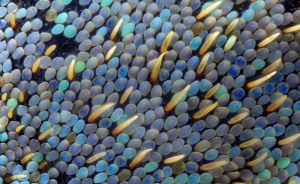Artist talk – Victoria Jones
Posted: October 23, 2014 Filed under: Research | Tags: 3d printing, Amy Thompson, haptic modelling, makers using technology, scales, technology, victoria jones Leave a commentWe were lucky enough to have an artist come in and talk to us this week about her own professional practice, and how she balances her working life as a fine artist with other work in order to fund her practice and pay her bills. This was a really interesting insight, as much of the time when artists come in to talk to us they only talk about their time doing their artwork, and it’s easy to get the impression that that is what they spend 100% of their time working on. However this is rarely the case, as very few artists can make a living off their work alone.
Victoria Jones seems to have been lucky enough to channel her creative talents into her working life, where she has over the past few years done many different jobs such as graphic design work, teaching, and being a head on the Design Wales council. While this doesn’t necessarily feed into her work directly, I think it must be a nice compromise rather than having to get a completely unrelated job (such as working in a call center or at a desk all day) which allows to creative cogs to keep turning.
One of the main things she is working on is running the “Makers Using Technology” residency, which I must say sounds amazing. Four artists a year are selected out of all the applicants, and are taught a variety of new skills using technology in order to incorporate and advance their own practice. These skills include 3D printing, C&C machining, and haptic modelling, and no previous technology skills are needed to apply. I must say, I am rather jealous as the level of equipment they have access to is much better than ours, as our 3D printers are manageable but really aren’t capable of the same level of detail and fidelity that theirs are, let alone being able to print different materials.
We also had the chance to go to a talk about how the same technology is applied in different areas such as medicine. A man called Sean Peel spoke with us and explained how 3D modelling and printing was now being used in order to accurately replace and fix areas of broken bone, especially in the skull, where the skull can be scanned and a 3D model can be made with the replacement area being sculpted to fit perfectly to the area. Of course, their 3D printers are far from our little makerbots in the studio, costing thousands of pounds, creating extremely accurate models in Titanium rather than plastic. This is done by using a Powder Bed Fusion 3D printer, which takes a bed of in this case Titanium powder, and fusing it together using an incredibly hot laser, going a layer down a time rather than building a layer up as you would with the makerbots. This was apparently one of the first uses for 3D printers, rather than the basic version we are used to seeing in university, and it was only after cheaper more affordable models started becoming available that it began to spread into the public knowledge.
One of the artists we were shown who had been working on the Makers Using Technology residency really inspired me, Amy Thompson. Unfortunately I don’t have the images that we were shown as they are not online, but she had created a new form of textile using 3D print which was a flexible rubbery material, covered in extended, hard, scale like patterns which move with the movement of your body. They were then painted with iridescent colours (apparently the most effective paint was nail polish) using a spray booth, and I found them captivating.

